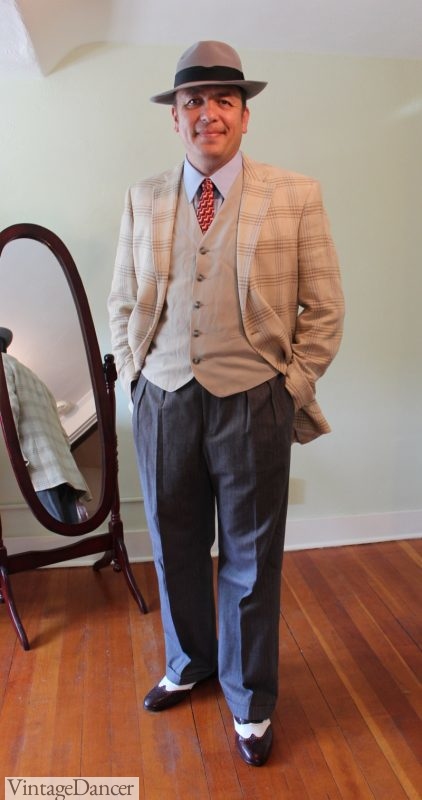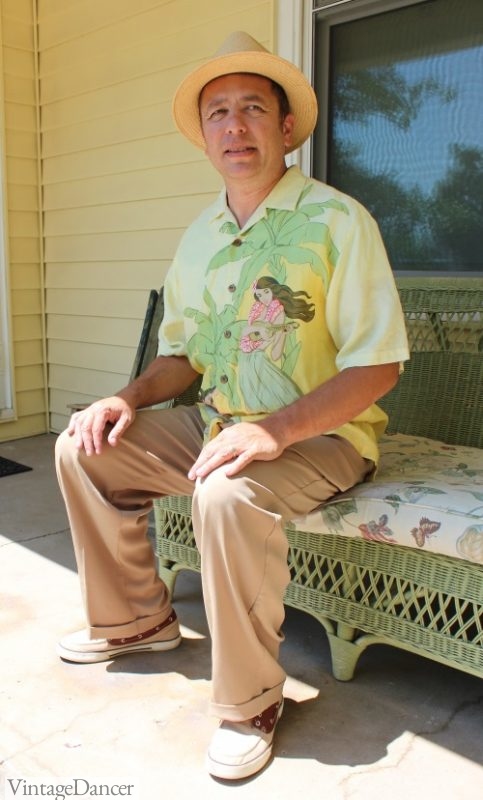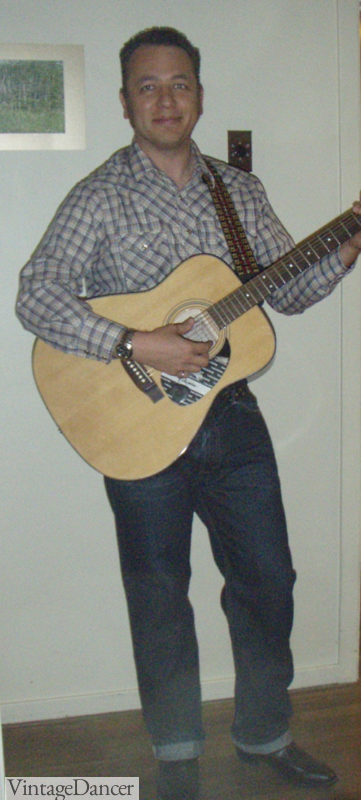1940s Car Culture and History
WWII’s Impact on 1940s Auto Manufacturing
In 1942, car production in the United States came to a halt. It began with a restriction of brightwork (chrome and stainless steel trim), then civilian production was stopped altogether. Auto factories were immediately repurposed to make parts and vehicles for the war. This all occurred within the span of two months. It was the first and last time such a thing happened in American history.
1940s cars produced between those two months earned the name “blackout specials.” With them, material rationing was in full effect: flat painted trim replaced shiny chrome, and many auto bodies were even painted in a flat (matte) color. Even cars that were assembled before the restriction, like last year’s models, had their chrome brightwork painted over to comply with regulations. When civilian production stopped, all unsold models were rationed out for the war effort.
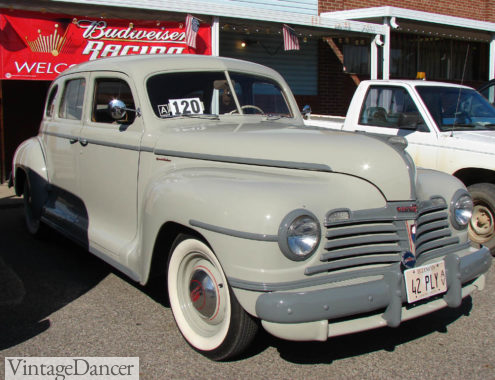
1942 Blackout Special – Plymouth Business Sedan
Car production would resume after the end of WWII, in late 1945. For the first time in over a decade, the American unemployment rate was below 5% and there were no material restrictions. Disposable income was high, and so was the appeal of the wealth and status that came with a new car — and “new” is just what Americans got. Gas and metals were no longer rationed, many American factories switched over to re/invest in the auto industry, and car ownership was climbing at an unprecedented rate. The late 1940s auto market was booming.
Engines and car size continued to grow, and with it came new innovations. Power windows, all-weather control systems (in luxury cars), hydraulic disc brakes, key-start ignition, and modern turn signals all began in the ’40s.
Keeping up with the Joneses: Car Ownership in the late 1940s
With money coming far more easily than in the 1930s, the luxury of a new car was easy to reach and highly desirable. Demand was high — and so was supply. 1940s cars would get even bigger to denote luxury, changing body styles rapidly to constantly push “newness.”
How old your car was said a lot about you. Making cars visibly “outdated” also helped encourage the constant purchasing of new cars. In the late 1940s, what you drove was who you were — and everybody wanted to be successful. While the 1950s were famous for this, it was there in full force as early as 1948.
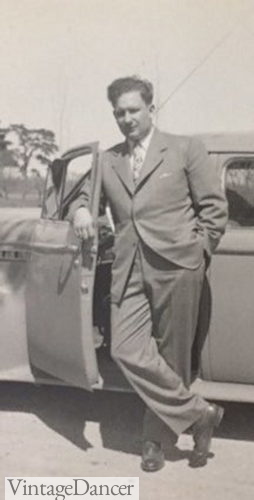
A man and his car (and a nice suit!) 1940s
Brand competition also grew as more car companies provided their products. The cost of a 1940s car relative to average income sank, and foreign brands emerged on the scene. These foreign cars were even cheaper, and mostly European in origin.
But the fun didn’t end at just owning new cars. With all these new drivers, car culture developed just as rapidly. NASCAR, founded in 1948, was an immediate hit. It standardized the scoring and practice of stock car racing across the country. 1940s custom culture continued from where it left off in the 1930s, exploding in both popularity and influence.
Many magazines such as Hot Rod (1948) began to circulate to celebrate the hobby of customizing cars. Finally, as more and more teens began to own cars, high schools began hosting new driver’s ed courses. These courses were even mandatory in some states.
What about 1940s chauffeurs?
FormalTailor (UK) offers Chauffer uniforms and caps. Also ask uniformsbypark (USA) if they can make one.
Accurate Men’s 1940s Car Show Costume Ideas
Factory Man
If you weren’t in the Army, you were probably at the factory. Unemployment dropped down to 1.2% in 1944 — a sharp contrast to the almost 25% of just a decade prior. Factories all over the country changed gears for the war cause, and civilians kept them running. While that wartime boom fell after 1945, many still kept their jobs in these industrial/labor fields or moved to other industrial careers… Like making cars and engines.
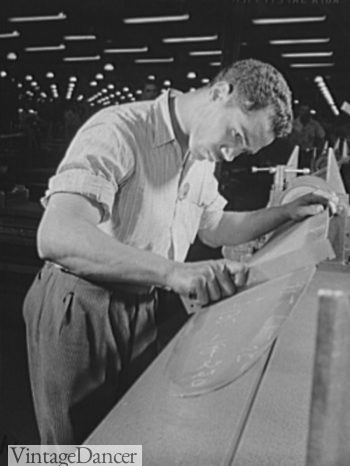
1942 An Aircraft Plant Worker Wears a Striped Work Shirt
Unlike the previous decades, clothing standards weren’t as strict for WWII era factory workers. Matter of fact, “uniforms” as a whole were treated much more loosely. Depending on the job, 1940s factory men could be seen wearing everything from chambray work shirts to patterned polo shirts. Strides made in uniform standards and “comfort” workwear would transform the face of work uniforms from the late 1940s onward. We’ll go into that more in the 1950s article.
WWII male factory workers commonly wore either bib overalls with a shirt, or shirt and pant separates. I chose the latter for a basic welder uniform. You can read more about 1940s men’s workwear here.
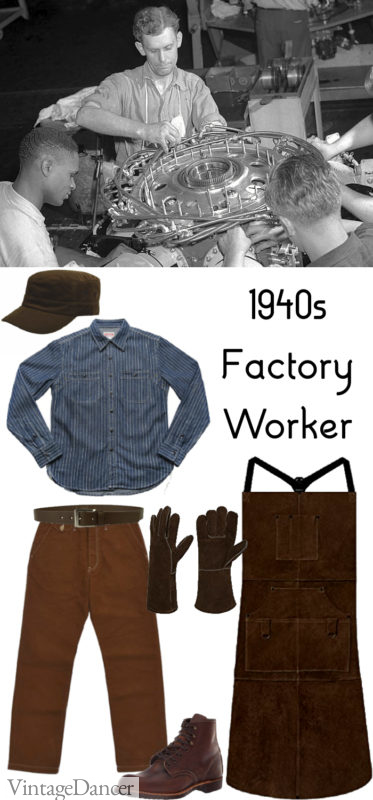
How To: You can start (and end) this 1940s costume with a 1940s style work shirt and some loose, high waisted trousers (your standard size in modern pants sized up once or twice). Wear a belt instead of suspenders, and some sturdy boots. I chose to add to this a welder’s glove and apron set, plus a work cap for a more “presentable” worker’s feel. Other ideas might include a pair of overalls/coveralls or a denim chore jacket instead.
Roll your sleeves up and add grease/dirt stains as desired for a more worn-in effect.
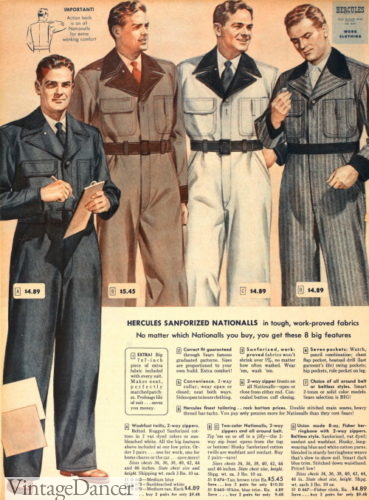
1948 men’s coveralls
Teenager
Believe it or not, “teenagers” are a very recent demographic. While teens would have have a big role in the 1950s, like many things, it began in the late ’40s. Teenagers were getting cars, a market identity, and becoming center-stage of of a more youthful turn in culture.
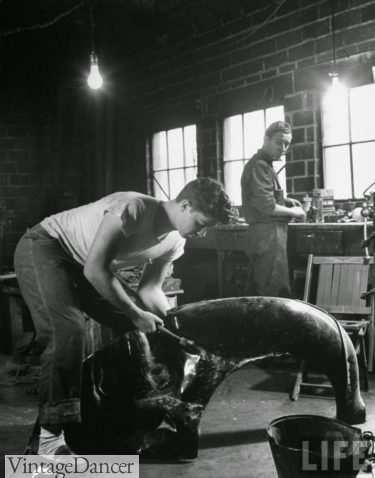
Along with them came the T-shirt. T-shirts saw a new role in the 1940s after young veterans began stripping down to their undershirt and trousers when going out. It was cool, casual, and the start of a new era in casualwear. Graphic T-shirts also saw their first touches of popularity in the 1940s, though patterned knit shirts were much more popular.
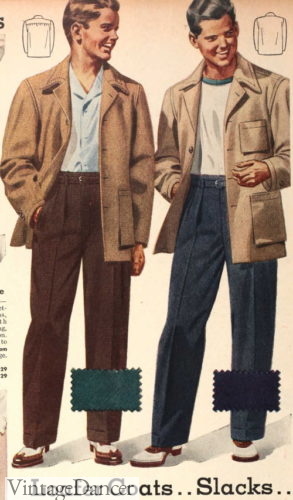
1942 Teens – Either Button Down Shirts or a T-Shirt with Casual Sport Coats and Trousers
This costume is great for cars of the late 1940s. It can also be worn with 1930s-1920s cars (many were still driving Model T’s).
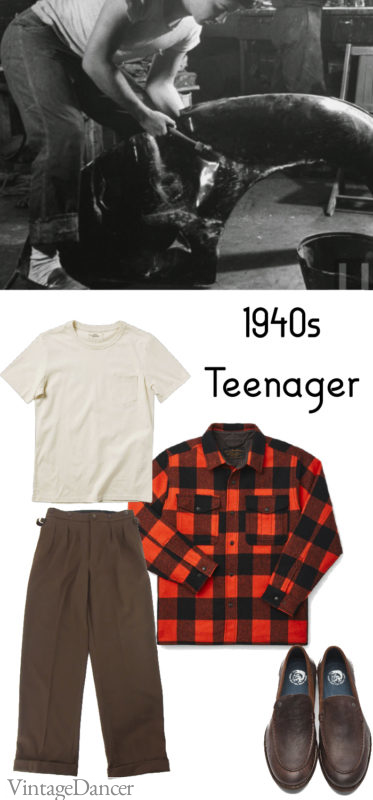
How To: Start with a good pair of pants, and build out from there. They should be wide legged and worn with a cuff that shows your socks. Your T-shirt can be worn tucked or untucked over a belt. Finish with a 1940s men’s jacket (I suggest a plaid shirt-jacket) and a pair of casual loafers or saddle shoes. Your socks can be any pattern, though I suggest neutral solids.
Wear no jacket (or a WWII Ike Jacket) and some ankle boots for a more postwar feel.
Your biggest struggle with this costume will be to keep from looking too ’50s. Read this article for more information about 1940s teen boys’ clothing.
Outlaw Biker
Around 10% of the American population served in the military for WWII. Understandably, some did not make the adjustment back to civilian life very well. Many of these struggling WWII veterans formed or joined biker groups of the late ’40s, like the the Hell’s Angels. They banded together seeking the freedom and camaraderie lost to the new normal of home life. With them came WWII-esque jackets and regalia, which is now a staple of American motorcycle culture.
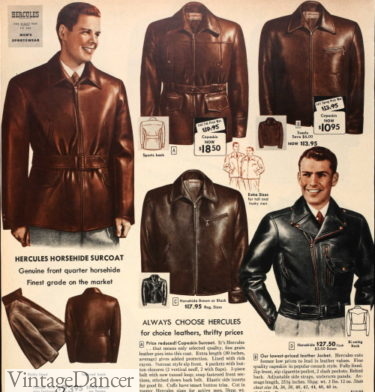
1949 Men’s Leather Jackets
The “outlaw” title in biker gangs came from them not being sanctioned by the AMA (American Motorcyclist Association). It didn’t necessarily mean that they were criminals, though many grew to play that part. Matter of fact, today’s “outlaw biker” image is credited to news reporting of the 1947 Hollister Riot. Originally part of a family friendly AMA motorcycle rally through Hollister, CA, the event was invaded by various outlaw gangs and devolved into drinking and street stunting. Many major newspapers, including Time, dramatized the event, and it became inspiration for several stories as well as the 1953 film The Wild One.
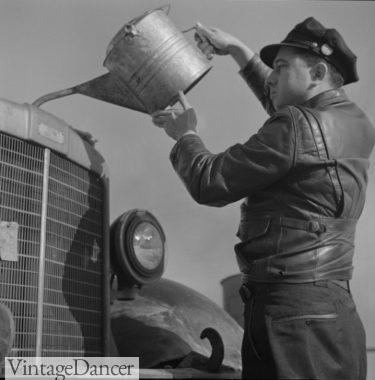
1943 – Truck Driver Wears Leather Jacket and Work Cap
Of course, this is a motorcycle costume idea. How does it relate to cars? Well, from the 1940s all the way to the 1970s, most biker gangs had one or two cars in their midst to hold provisions or act as transport for those who lost their bikes while on voyage. They were generally more utilitarian vehicles, like trucks or stripped down sedans. Others from the same disillusioned background drove early two-door “sporty cars,” like the MG TC.
This is a great costume for men with work-like vehicles or heavily modified sports vehicles of the 1930s and late 1940s. It can also work for the early-mid 1950s.
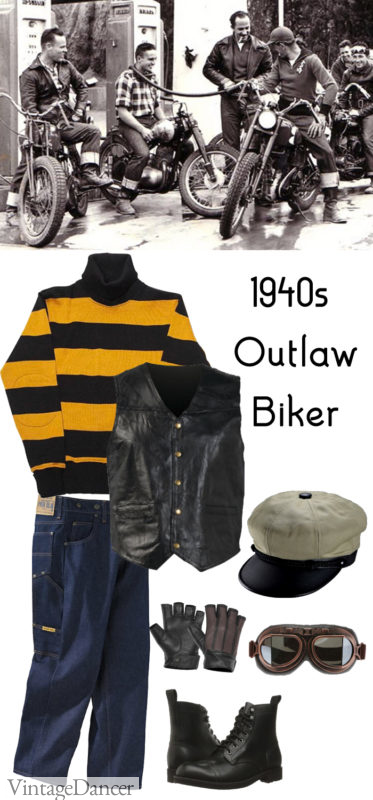
How To: Avoid the standard “black and denim” look. 1940s riders often wore bright colors — yellow, blue, red, white, and more showed up on motorcycle sweaters and MC club regalia. A colorful sweater and denim jeans (darker wash, high waist, wider fit) will make for a good base. Add road leathers on top of that, like a leather vest or jacket left unbuttoned. Black leather is edgy, while brown is more “presentable.” This same color rule will apply to your boots, which should be either lace-up or engineer boots. Avoid chunky punk/modern shoe treads as they are not accurate to the era. You can finish your costume with a biker cap, goggles, gloves, and/or a necklace.
Serviceman
Here’s one for the lucky people with WWII-era blackout specials, Harley Davidson WLAs, Ford GPWs, Willys MBs, and other WWII Jeeps and Army cars.
For WWII uniforms and uniform references, I like the WWII Impressions website. They have both references and products for creating a reproduction WWII uniform. I chose a standard wool officer’s uniform because it is most recognizable. Browse the WWIIImpressions site for more uniform options and uniform reference tables.
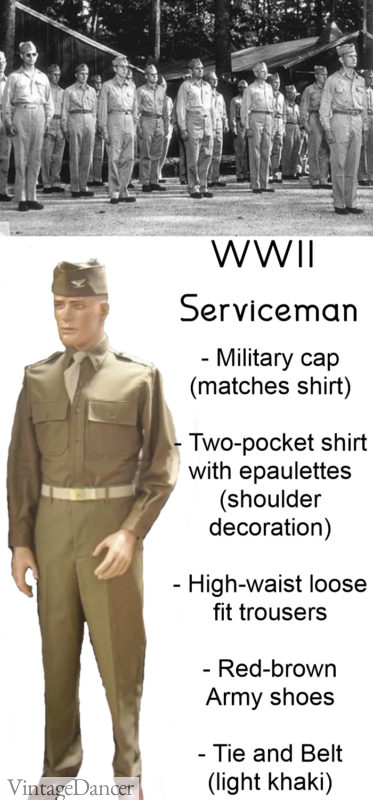
Note: The top picture is likely an Army summer uniform rather than wool Officer’s garb (note the belt). Find that uniform here.
How To: Click here for the shop page of the above uniform. The cap is optional, The cap is optional, but recommended if in a more formal setting. The shoes can be found here.
For those who wish to put their own uniform together, you will need a two-pocket shirt and trousers in either olive drab or khaki. (WWII OD green is closer to a modern dark khaki than most modern olive trousers. It should be more yellowish/brownish than greenish.) Depending on your uniform, your shirt and trousers should not match up exactly. The pictured uniform has trousers that are slightly lighter in color than the shirt itself. Your shoes should be 6-8″ in a reddish brown and your belt should be a light khaki web belt.
The 1940s fit for trousers is different than even a modern “relaxed fit.” Size up 1-2 sizes to achieve the proper wide leg, low seat, and high rise. Some genuine WWII trousers can be bought online for less than $40.
1940s Work Uniforms
Men who worked at service stations (gas and repair), as mechanics, delivery drivers, and similar occupations wore a standard work clothes/ uniform set. This consisted of a matching shirt and trousers with belt, necktie, cap and jacket. Overalls and coveralls could also be worn. Read more about work clothes here.
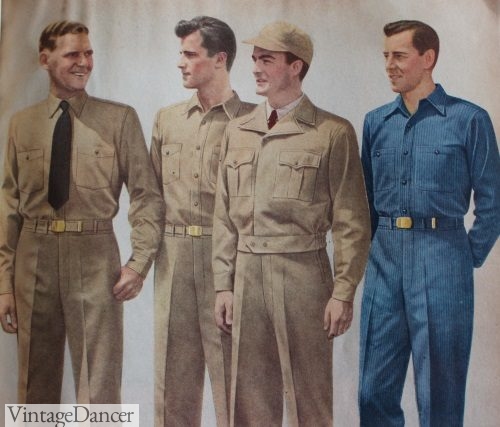
1947 Men’s Work Uniforms
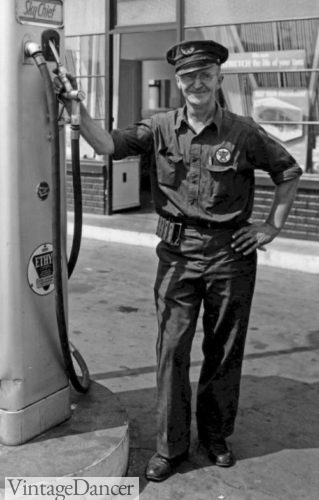
1940s Gas Station Attendant
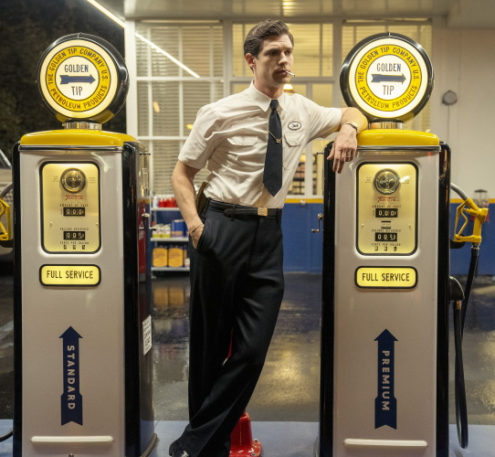
1947 Service Station Uniform (Hollywood Film)
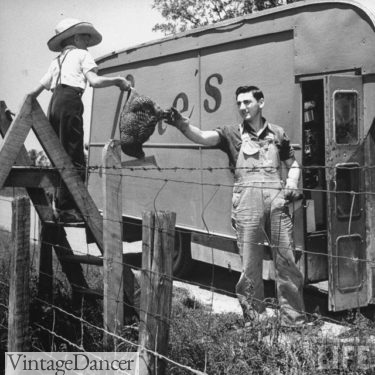
Delivery Man Wears Overalls
More Accurate 1940s Men’s Clothing Ideas
So much happened in the 1940s that this article hardly touched on standard men’s fashion and clothing of the 1940s. Wearing hats was still expected, for example, and pants styles were drastically different than modern men’s pants. Click here for an in-depth article on what real men wore in the 1940s.
Check out this list of 1940s-1950s outfit ideas and inspiration. We also have guides to 1940s men’s casual fashion and 1940s men’s hairstyles.
Shop 1940s style pants, shirts, suits, and more here.
- 1940s Sport Coat (light) and Vest, over Dark Trousers, Two-Tone Shoes, and a Grey Fedora Hat
- Sit Back and Relax with 1940s Inspired Hawaiian Style
- Plaid Western Shirt, Dark Blue Jeans with a Roll Cuff, and Black Boots
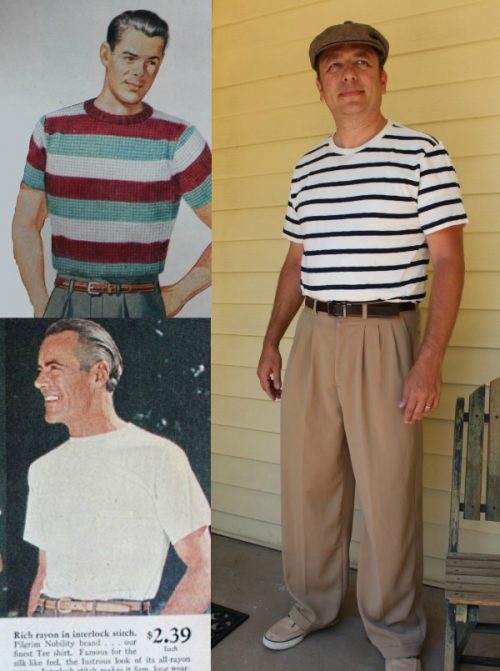
The Classic Plain or Striped T Shirt
